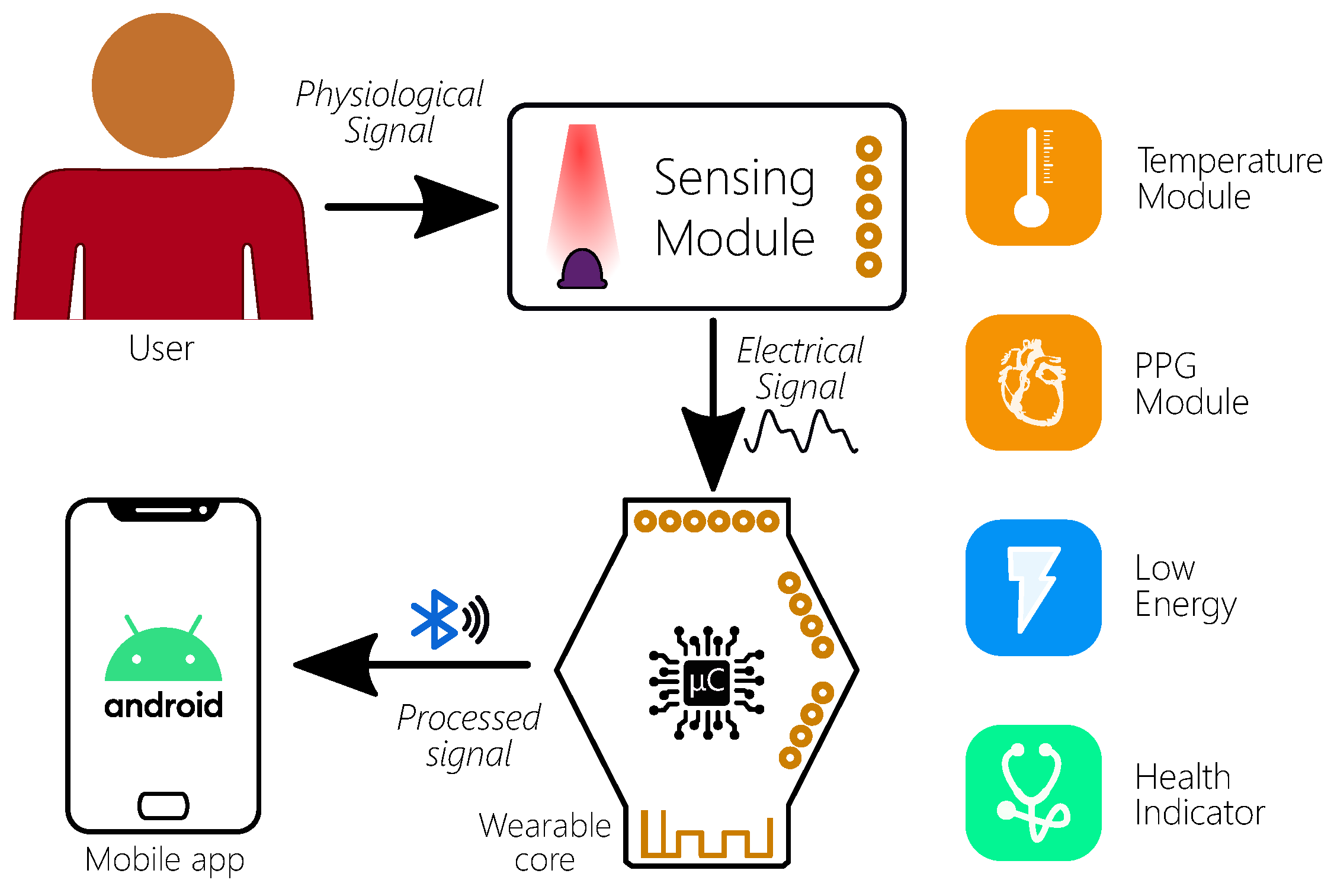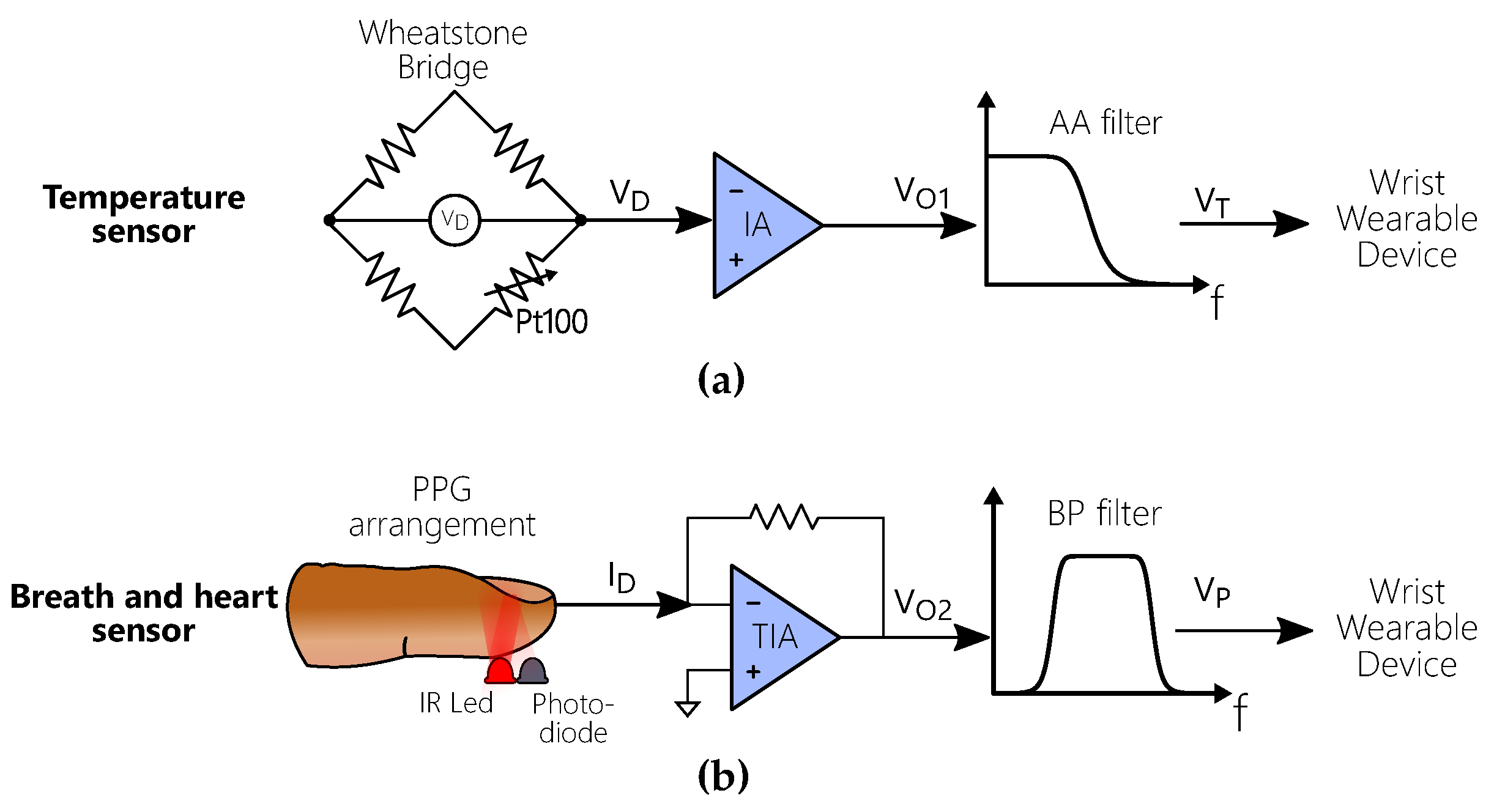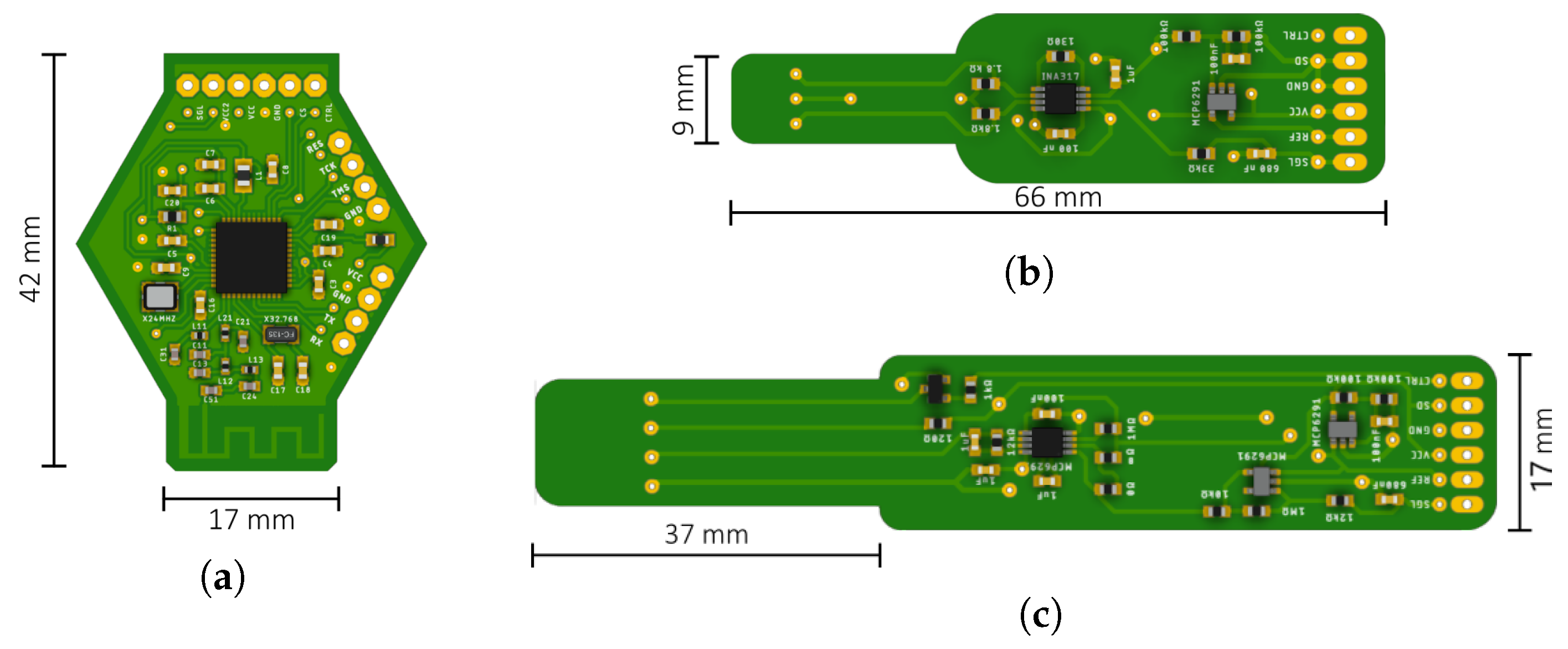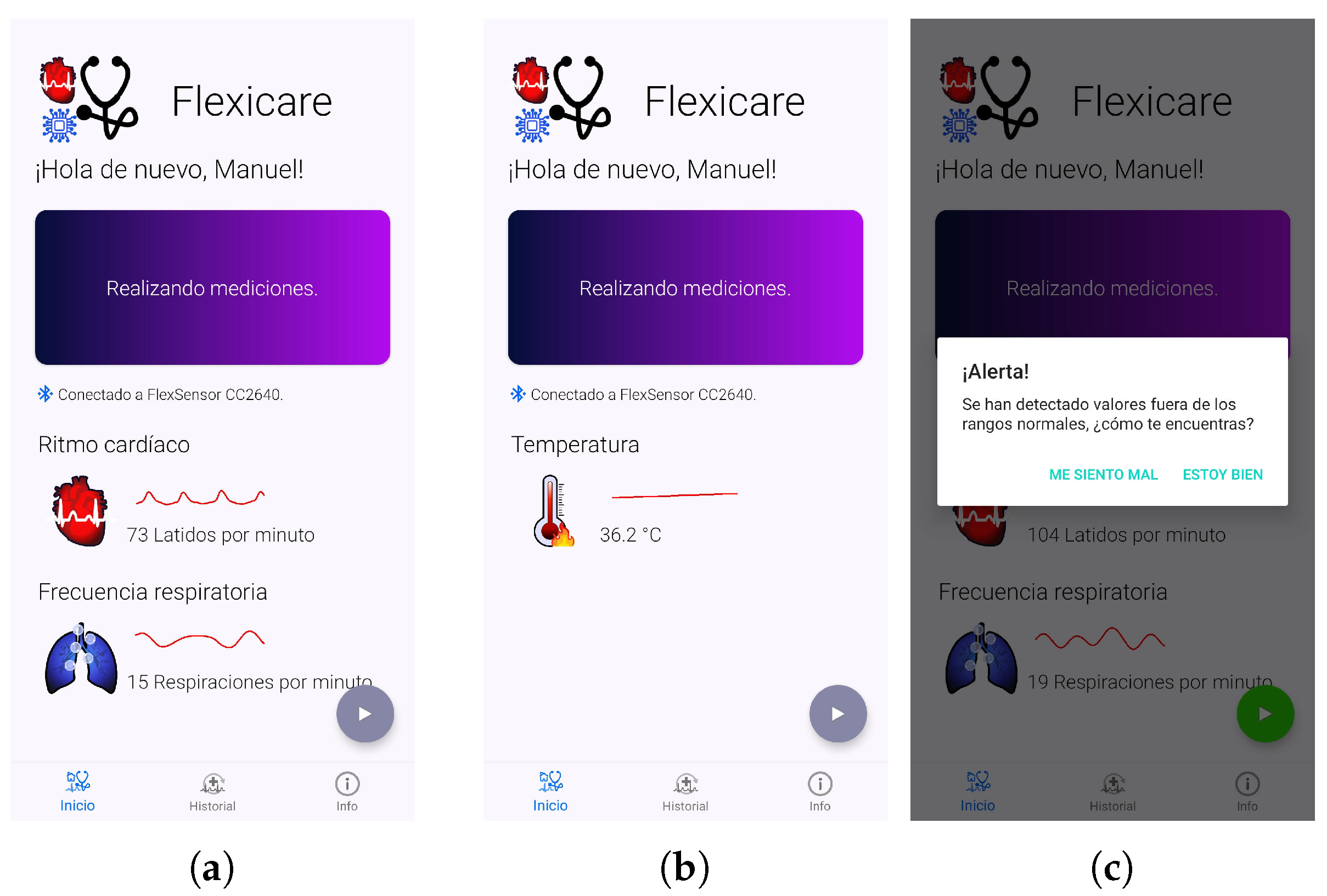Low-Energy and Modular Wearable Device for Wireless Measurement of Physiological Signals †
Abstract
:1. Introduction
2. Materials and Methods
2.1. System Overview
2.2. Hardware Design
2.2.1. Wearable Device Core
2.2.2. Corporal Temperature Sensor
2.2.3. Breath and Heart Rate Sensor
2.2.4. Device Fabrication
2.3. Firmware and Mobile Application
3. Results and Discussion
3.1. Corporal Temperature Sensor Calibration
3.2. PPG Signals Analysis
3.3. Experimental Results
4. Conclusions
References
- Dias, D.; Paulo Silva Cunha, J. Wearable Health Devices-Vital Sign Moni-toring, Systems and Technologies. Sensors 2018, 18, 2414. [Google Scholar] [CrossRef] [PubMed]
- Cherrylyn, B.; Hee-Cheol, K. Wearable Computers in Human Perspective: The Decision Process of Innovation Acceptance with User Issues and Concerns. J. Em. Tech. Adv. Eng. 2012, 2, 573–580. [Google Scholar]
- Sang, Y.L.; Keeheon, L. Factors that influence an individual’s intention to adopt a wearable healthcare device: The case of a wearable fitness tracker. J. Tech. Fore. and Soc. Change 2018, 129, 154–163. [Google Scholar]
- Jamin, C.; Nicholas, O.; Lara, K. Wearable healthcare: Lessons from the past and a peek into the future. Telemat. Inform. 2017, 34, 1011–1023. [Google Scholar]
- Suphan, N.; Yigit, Y. Consumers and Physicians Perceptions about High Tech Wearable Health Products. Procedia Soc. Behav. Sci. 2015, 2015 195, 1261–1267. [Google Scholar]
- Minjeong, H.; Seongdong, L.; Hyunhyub, K. Wearable and flexible sensors for user-interactive health-monitoring devices. J. Mater. Chem. B 2018, 6, 4043–4064. [Google Scholar]
- Edwards, J. Medicine on the Move: Wearable devices supply health-care providers with the data and insights necessary to diagnose medical issues and create optimal treatment plans. IEEE Signal Process. Mag. 2019, 36, 8–11. [Google Scholar] [CrossRef]
- Mukhopadhyay, S.C. Wearable Sensors for Human Activity Monitoring: A Review. IEEE Sens. J. 2015, 2, 1321–1330. [Google Scholar] [CrossRef]





| State | Consumption () |
|---|---|
| BLE advertising | 0.24 |
| BLE connected | 0.49 |
| Data acquisition & streaming | 1.93 |
| +Temperature sensing module | +2.42 |
| +PPG sensing module | +2.77 |
| +PPG sensing module enable | +16.7 |
Publisher’s Note: MDPI stays neutral with regard to jurisdictional claims in published maps and institutional affiliations. |
© 2020 by the authors. Licensee MDPI, Basel, Switzerland. This article is an open access article distributed under the terms and conditions of the Creative Commons Attribution (CC BY) license (https://creativecommons.org/licenses/by/4.0/).
Share and Cite
Herrera-Juárez, M.A.; Ramírez-Chavarría, R.G. Low-Energy and Modular Wearable Device for Wireless Measurement of Physiological Signals. Eng. Proc. 2020, 2, 75. https://doi.org/10.3390/ecsa-7-08213
Herrera-Juárez MA, Ramírez-Chavarría RG. Low-Energy and Modular Wearable Device for Wireless Measurement of Physiological Signals. Engineering Proceedings. 2020; 2(1):75. https://doi.org/10.3390/ecsa-7-08213
Chicago/Turabian StyleHerrera-Juárez, Manuel A., and Roberto G. Ramírez-Chavarría. 2020. "Low-Energy and Modular Wearable Device for Wireless Measurement of Physiological Signals" Engineering Proceedings 2, no. 1: 75. https://doi.org/10.3390/ecsa-7-08213
APA StyleHerrera-Juárez, M. A., & Ramírez-Chavarría, R. G. (2020). Low-Energy and Modular Wearable Device for Wireless Measurement of Physiological Signals. Engineering Proceedings, 2(1), 75. https://doi.org/10.3390/ecsa-7-08213





